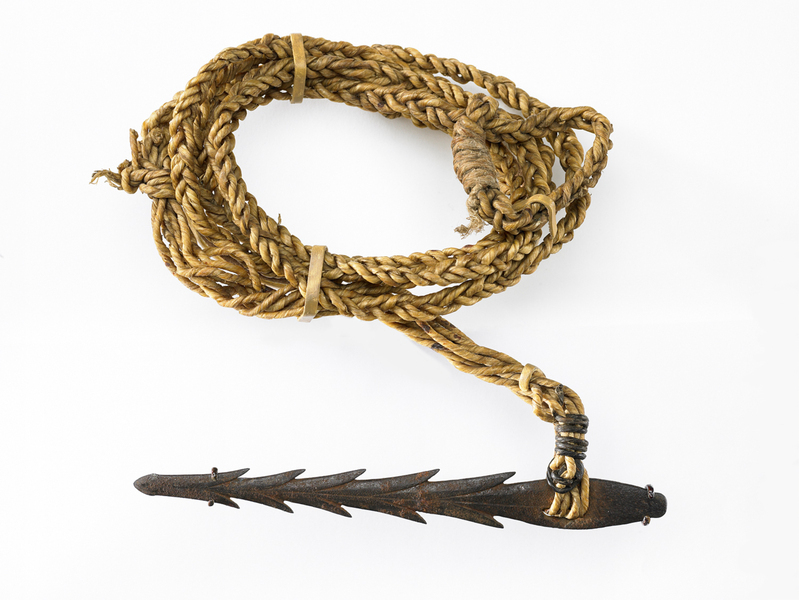Seal Spear Head And Line Item Number: E20653-0 from the National Museum of Natural History





Notes
FROM 19TH OR EARLY 20TH CENTURY EXHIBIT LABEL WITH CARD: "HEAD OF FISH-DART.---MADE OF NATIVE COPPER; FIVE BARBS ON EACH SIDE; THROUGH THE SHANK IS ROVE A STRAP MADE OF BRAIDED SINEW. LENGTH, 7 INCHES. FORT SIMPSON, BRITISH COLUMBIA, 1876. 20,653. COLLECTED BY JAMES G. SWAN."This object is on loan to the Anchorage Museum at Rasmuson Center, from 2010 through 2027.Source of the information below: Smithsonian Arctic Studies Center Alaska Native Collections: Sharing Knowledge website, by Aron Crowell, entry on this artifact http://alaska.si.edu/record.asp?id=526, retrieved 4-24-2012: Spear head, Tsimshian. Seal meat and fat are highly important foods, and their oil is used to preserve berries and as a condiment for eating dried fish. Seals were traditionally killed from canoes using long spears with barbed heads. This spear head, which is attached to a piece of braided seaweed [sic] line, was forged from an iron trade file. Faint parallel lines from the file can still be seen.From 2009 Conservation Condition Report by Kim Cullen Cobb: Metal spear head with a braided sinew cord tied through a hole in the proximal end. The metal spearhead is fabricated from a iron file trade item. The file cross-hatching from the original tool is visible in the surface texture; the iron was subsequently carved into the shape of a barbed spearhead. There are five barbs extending down each side, with a groove running down the middle of the spearhead and out to the end of each barb point. The cordage running from the spearhead consists of four strands and is strung through a hole at the end of the spear. A darker cord wrapping ties the heavier cord near the spearhead. Eight strands are twisted together and four are tied around the others at 17 cm. From here, the remaining four cords are braided down the length of the line and then tied in a slip knot at the end. Research shows that seaweed was sometimes used as fishing or hunting line, and the waxy, fibrous appearance of the cord suggests that it could possibly be made of bull kelp. However, comparisons made with this material and examples of seaweed in the NMNH collections indicate that the cord is likely fabricated from thick strands of sinew.
Item History
- Made in Fort Simpson, British Columbia, Canada
- Collected by James G. Swan in Fort Simpson, British Columbia, Canada
- Received during 1876
What
- Name
- Seal Spear Head And Line
- Identification Number
- E20653-0
- Type of Item
- spear
Who
- Culture
- Tsimshian
- Field Collector
- James G. Swan
Where
- Holding Institution
- National Museum of Natural History
- Made in
- Fort Simpson, British Columbia, Canada
- Collected in
- Fort Simpson, British Columbia, Canada
When
- Acquisition Date
- during 1876
Other
- Accession Number
- 004686